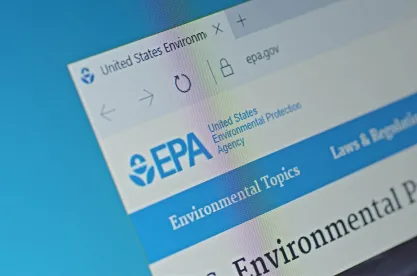In the United States, environmental and public health measures often correlate to variables like education, income, and a community’s racial makeup. In the five decades since Congress began to create comprehensive environmental statutes like the Clean Air Act, the Clean Water Act, and CERCLA, there has been much success in remedying environmental harms in some communities, but not others.
Among the main priorities of the Biden Administration in the environmental space has been on environmental justice (EJ) issues which attempt to address concerns in communities which are perceived as “environmentally overburdened” — in essence, left behind.
Below, we summarize what the Supreme Court’s decision says, provide a brief update on ongoing EJ issues, and outline questions to watch in the EJ space.
SCOTUS’s Decision in Students for Fair Admissions
The decision in Students for Fair Admissions v. President and Fellows of Harvard College and Students for Fair Admissions v. University of North Carolina is here. In a 6-3 ruling, the Court held that Harvard and UNC’s affirmative action initiatives violate the Equal Protection Clause of the 14th Amendment. Highlights include:
An opinion authored by Chief Justice John Roberts focuses on interpreting the 14th Amendment’s Equal Protection clause to preclude direct consideration of race,—asserting that the US Constitution requires racial neutrality in policymaking.
A concurrence authored by Justice Clarence Thomas offers “an originalist defense of the colorblind Constitution” and to outline what he labels “the pernicious effects” of policies like affirmative action.
A concurrence authored by Justice Neil Gorsuch – joined by Justice Thomas – asserts that, like the Equal Protection Clause, Title VI of the Civil Rights Act of 1964 prohibits universities to consider race in admissions.
A concurrence from Justice Brett Kavanaugh emphasizes that past precedent – i.e. Justice Sandra Day O’Connor’s concurrence in Grutter v. Bollinger – emphasized that use of racial classifications in admissions decisions were intended to be a “temporary matter” which was “limited in time.”
Dissents authored by Justices Sonia Sotomayor and Ketanji Jackson emphasize the importance of affirmative action in American society, that the Court has overturned past precedent without admitting to doing so, and that an “originalist” take on the 14th Amendment would reflect that it was a post-Civil War amendment intended to allow Black Americans to be full participants in society.
Justice Gorsuch’s concurrence discussing Title VI of the Civil Right Act of 1964 is most relevant to a discussion of environmental issues. Title VI requires that “No person in the United States shall, on the ground of race, color, or national origin, be excluded from participation in, be denied the benefits of, or be subjected to discrimination under any program or activity receiving Federal financial assistance.” 42 U. S. C. §2000d. In Gorsuch’s view, “discrimination,” essentially means any disparate treatment amongst individuals on either an individual or aggregate level. From here, he concludes that “Title VI prohibits a recipient of federal funds from intentionally treating one person worse than another similarly situated person because of his race, color, or national origin.” This “discrimination” is impermissible “without regard to any other reason or motive . . . .”
What is EJ?
The US Environmental Protection Agency (EPA) defines “environmental justice” as “the fair treatment and meaningful involvement of all people regardless of race, color, national origin, or income with respect to the development, implementation and enforcement of environmental laws, regulations and policies.” It has also been a priority in various states. (See here.)
We have blogged extensively regarding the Biden Administration’s EJ efforts and a primer on key efforts is available here. From our perspective, EJ is at the center of the Biden Administration’s environmental agenda, which has taken a “whole of government” approach to EJ issues using all available authorities to address concerns.
Most relevant here, EPA’s strategic planning for EJ issues relies heavily on EPA civil rights authorities, which in turn rely in part on Title VI. These authorities have been front-and-center in EJ investigations, most notably those in Chicago related to the planned relocation of a recycling facility, and in Louisiana, related to petrochemical plants in an area often referred to as “Cancer Alley.” (See our prior discussion of these sites here.) Earlier this week, EPA dropped its Louisiana civil rights investigation before a response was due to be filed in litigation by the State of Louisiana challenging these efforts.
Affirmative Action vs. EJ
Unpacking the Students for Fair Admissions decision will take time. The decision will have effects in the EJ space because EPA relies, to some degree, on Title VI authorities to support its civil rights programs. Additionally, the decision is likely to be influential in any challenge to the use of racial criteria in targeting spending to benefit EJ communities whether the spending was allocated directly by state or federal regulators or legislatures. Finally, some portions of the decision — notably Justice Gorsuch’s concurrence — reflect broad skepticism on the part of some justices on social use of demographic labels.
This said, there are some reasons for cautious optimism:
Many EJ programs already “priced in” this decision. That the Supreme Court was likely to be skeptical to affirmative action policies using race as a factor comes as little surprise. The initial version of EJScreen, EPA’s mapping and demographics tool, explicitly analyzed the percentage of people of color in the affected area. Since its release, it has been revised to de-emphasize race as a factor driving EJ actions. (See our past discussion here.) Instead of using race, factors like income, education, and population density can be used to target environmentally overburdened areas. Moreover, other efforts ranging from deployment of technologies like “fenceline monitoring” can be used to address environmental issues.
Further, with the EPA’s dismissal of the Louisiana civil rights complaint, EPA will have some discretion on fact patterns which potentially implicate Justice Gorsuch’s interpretation of Title VI, which might include the consideration of race in making permitting, citing, and enforcement decisions. One reading of his concurrence is that any consideration of race could result in a finding that federal funds have been allocated in a discriminatory way. For now, EJ initiatives are not yet in the crosshairs as Justice Gorsuch’s concurrence – joined only by Justice Thomas – was the only opinion that spoke about Title VI more broadly.
Federal regulators have been largely cautious when testing legal theories in court. As we indicated above, EPA recently dropped its Louisiana civil rights investigation when pressed to defend theories including that “disparate impact” was actionable under federal environmental laws. EPA’s caution here is consistent with its approach to deploying other legal theories, as was evidence when it released its Cumulative Impacts Addendum in January 2023 to its memorandum on Legal Tools to Advance Environmental Justice, which noted that program staff should confer with relevant attorneys who can address “interpretive issues” and “consideration of other legal issues.”
At least in the short term, public “capacity building” and private efforts may result in increased focus in this space. A counterintuitive result of recent controversial Supreme Court decisions has been increased private attention and political solutions to civil rights issues. In addition to increased focus on compliance and enforcement, the Biden Administration has actively attempted to increase public participation in the regulatory process and provided significant funding to community groups to address environmental problems. Private groups ranging from philanthropies to university clinics have also organized to address EJ concerns through litigation and lobbying. Finally, the recent focus on so-called “ESG issues” — meaning environmental, social, and governance — in the corporate space may result in collaborative solutions that benefit all communities.




 />i
/>i
